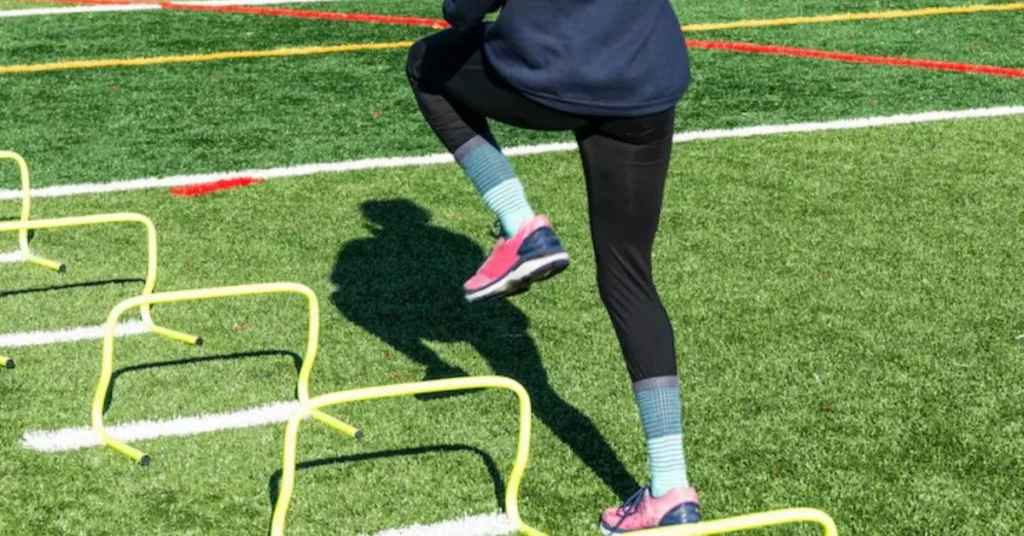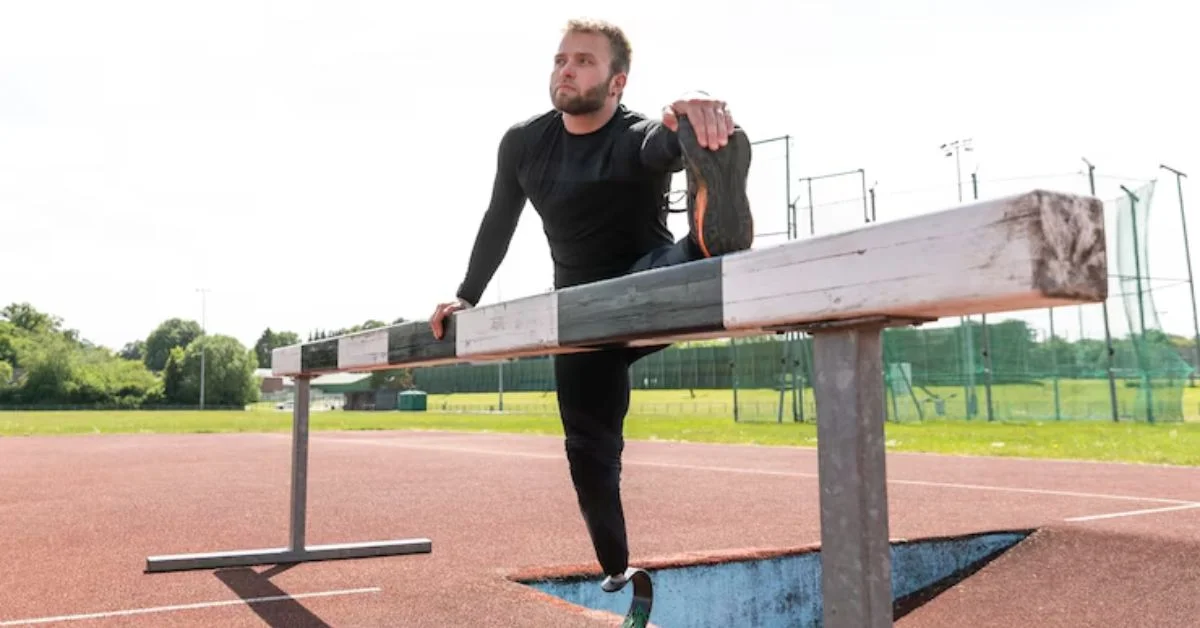Hurdle Techniques- Knowledge of biomechanics, proficiency in communicating, and the ability to motivate students are all necessary for the successful instruction of hurdle methods. If you’re looking for a way to efficiently teach hurdle methods, you’ve come to the perfect spot.
Learn the ropes of hurdling, find out which workouts are the most effective for technique development, steer clear of typical pitfalls, and motivate athletes of all abilities with this comprehensive handbook. Shall we begin immediately?
Understanding the Basics of Hurdling
You should familiarize yourself with the demands of hurdling before you begin instructing. Hurdling is a kind of sprinting in which competitors try to keep their momentum going while they quickly clear a series of obstacles. It combines timing, rhythm, suppleness, and speed.
Hurdling Events Include:
- 60m hurdles (indoor)
- 100m hurdles (women)
- 110m hurdles (men)
- 400m hurdles (both genders)
Each event has its own technical nuances, but the foundational techniques remain largely the same.
Key Phases of Hurdling
Every successful hurdler masters these four phases:
- Start and Approach – Accelerating out of the blocks into the first hurdle.
- Take-off – Proper foot placement and lift.
- Flight over the hurdle – Efficient body positioning.
- Landing and Sprint Between Hurdles – Quick recovery and maintaining rhythm.
Teaching athletes to excel in each phase ensures smooth, fast, and effective hurdling.
Preparing Athletes for Hurdles: Essential Fitness Components
Good hurdlers aren’t just fast—they’re well-rounded athletes. Make sure your athletes develop:
- Sprint speed
- Explosive strength (especially in the hips and core)
- Flexibility (hamstrings, hip flexors)
- Coordination and rhythm
These physical skills make learning technical elements easier.

Step-by-Step Approach on How to Teach Hurdle Techniques
1. Start with Fundamental Sprint Mechanics
Before hurdles come sprinting fundamentals: good posture, arm action, and explosive knee drive.
2. Introduce Lead Leg and Trail Leg Movements Separately
Break down the movement:
- Lead leg extends over the hurdle with dorsiflexed toes.
- Trail leg whips around in a tight, fast arc.
Use drills like “wall drills” or “hurdle walkovers” to isolate each leg.
3. Progress to Walking Over Hurdles
Set up hurdles at lower heights and let athletes walk over them, focusing on correct lead and trail leg mechanics.
4. Rhythm and Sprint Work
Add in 3-step drills (three strides between hurdles) to build race rhythm.
5. Simulate Race Conditions
Once comfortable, practice full race simulations to work on flow, reaction time, and consistency.
Remember: Always correct mistakes immediately to avoid muscle memory issues.
Common Mistakes and How to Correct Them
1. Overstriding into the hurdle:
- Correction: Teach a shorter, quicker sprint rhythm.
2. Dropping the trail leg too low:
- Correction: Emphasize tight trail leg movement and strong hip flexion drills.
3. Losing balance on landing:
- Correction: Focus on upper body posture and balanced foot strike.
4. Looking down or sideways:
- Correction: Teach athletes to keep their eyes focused on the finish line or next hurdle.
Best Drills for Teaching Hurdle Techniques
A. Lead Leg Drill (Wall Drill)
- Stand close to a wall.
- Practice snapping the lead leg up and extending quickly.
B. Trail Leg Drill (Cone Drill)
- Set a cone or mini-hurdle.
- Practice bringing the trail leg over without touching the obstacle.
C. Walkover Drills
- Set multiple hurdles low.
- Athletes walk rhythmically over each hurdle, focusing on technique.
D. Quick-Step Drills
- Place hurdles closer together.
- Encourage fast, rhythmic steps between.
E. Full Sprint Hurdle Drills
- Set 3-5 hurdles at race height.
- Simulate race speed for advanced athletes.
Safety Considerations in Hurdle Training
Safety is crucial, especially for beginners. Keep in mind:
- Use adjustable hurdles for height and distance.
- Ensure soft surfaces or cushioned hurdles to reduce injury risk.
- Monitor athlete fatigue closely to prevent sloppy technique.
- Warm up thoroughly with dynamic stretches and sprint drills.
Always prioritize technique over speed until athletes demonstrate control.
Tools and Equipment Needed: Hurdle Techniques
Here’s a basic toolkit for hurdle coaching:
- Adjustable hurdles (youth and senior sizes)
- Mini hurdles or cones
- Sprinting spikes or appropriate shoes
- Marking cones for spacing
- Stopwatch for timing drills
- Resistance bands for strength work
Optional but helpful:
- Video analysis tools for form review
- Plyometric boxes for explosive drills
HTML Table: Key Hurdling Skills and Drills
| Skill Focus | Recommended Drill |
|---|---|
| Lead Leg Mechanics | Wall Drill |
| Trail Leg Action | Cone Drill |
| Overall Hurdle Rhythm | Walkover Drill |
| Speed Between Hurdles | Quick-Step Drill |
| Race Simulation | Full Sprint Hurdle Drills |
Conclusion: Hurdle Techniques
In addition to assisting athletes in overcoming hurdles, teaching them proper hurdle technique may boost their self-assurance, speed, and accuracy. Improving an average athlete’s skills to a fantastic level is possible via mastering the art of hurdle technique instruction.
Hurdling may be a fun and challenging sport for athletes of all abilities when coached in a methodical, patient, and supportive way.

FAQs: Hurdle Techniques
1. At what age should athletes start hurdling?
Athletes can start basic hurdle drills around 10-12 years old with appropriate hurdle heights.
2. How high are hurdles for beginners?
Youth hurdles typically range from 30 to 33 inches for beginners, depending on age and gender.
3. What is the biggest mistake new hurdlers make?
The most common mistake is attacking the hurdle instead of gliding over it smoothly.
4. How important is flexibility in hurdling?
Very important! Flexibility in the hips and hamstrings helps prevent injuries and improves technique.
5. How many hurdles are in a 100m hurdle race?
There are 10 hurdles spaced evenly across the 100 meters.
For more information, click here.









